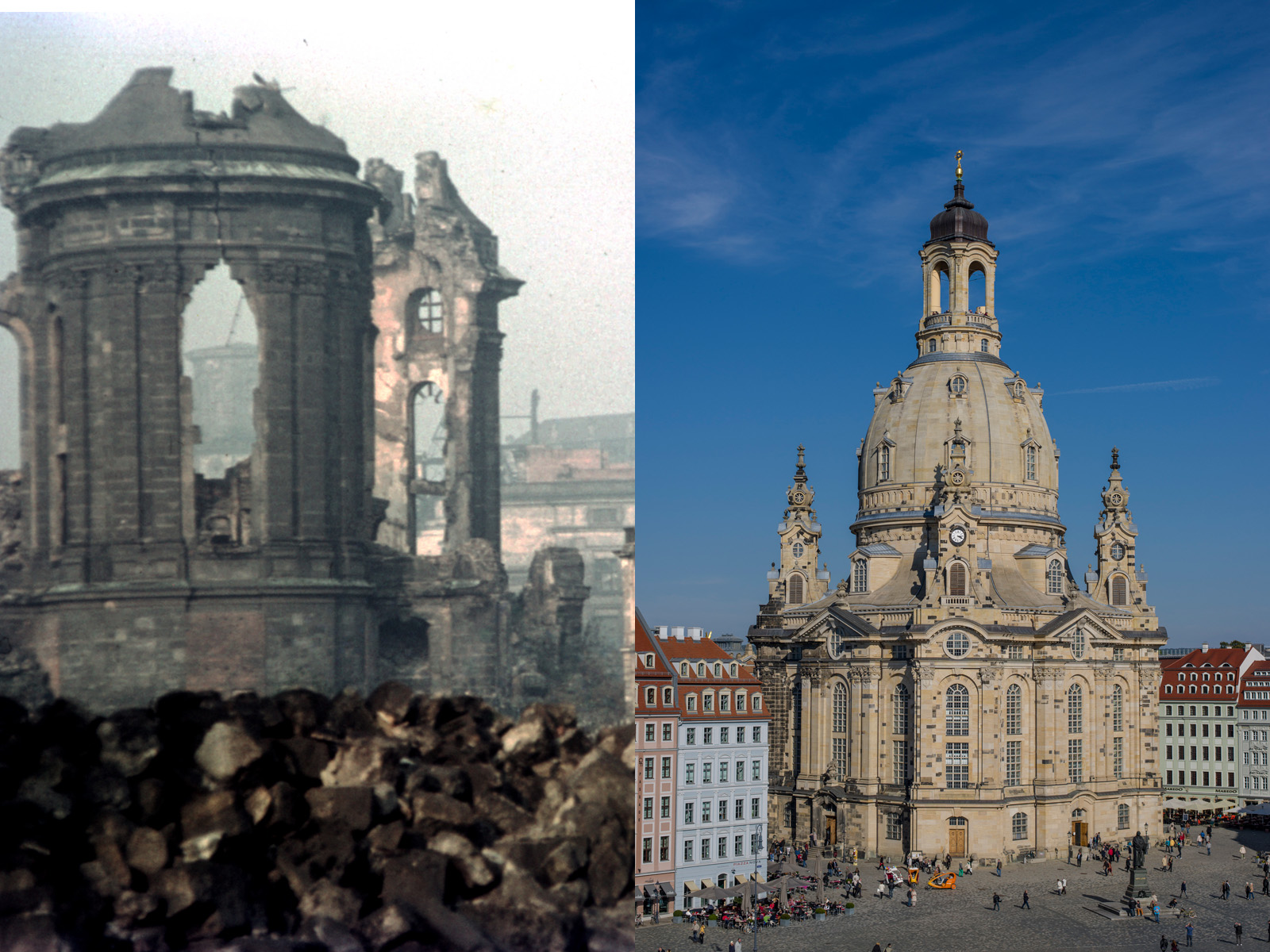- Just like France plans to do with Notre-Dame, people have been rebuilding famous buildings and monuments after devastating events for centuries.
- In the US, the White House was rebuilt after the British burned the original down, and One World Trade Center in New York was built to replace the Twin Towers after 9/11.
- After World War II, London had to rebuild St. Paul’s Cathedral.
- Visit INSIDER.com for more stories.
After the devastating fire that ravaged Notre-Dame this week, French President Emmanuel Macron announced a plan to rebuild the centuries-old cathedral in just five years.
This isn’t the first famous monument to be destroyed by fire, nor will it be the first time that a beloved building or landmark will be rebuilt after devastating events. Whether destroyed by a fire or a deadly terror attack, cities all over the world have been rebuilding their landmarks for decades.
Here are some of the most impressive buildings that have been rebuilt throughout history.
The White House we know today is not the first iteration. The original White House was called the President’s House, and it burned down in 1814.

The first three presidents of the United States – George Washington, John Adams, and Thomas Jefferson – never lived in the White House. Instead, they lived in the President’s House, which was the largest home in the nation at the time. When James Madison took office, the country entered into the War of 1812 with the United Kingdom. During the war, British troops were able to invade Washington, D.C. and burn down several buildings, including the President’s House, in 1814.
For three years, architect James Hoban worked to rebuild it. In 1817, President James Monroe moved into the new White House, but it would be years before the building was officially finished. It has been remodeled several times since.
The Royal Exchange in London was destroyed and rebuilt twice.

The first Royal Exchange opened in 1571, and it acted as a commercial trading post in London. It was destroyed by the Great Fire of 1666, but rebuilt just a few years later. That second Exchange was again destroyed by a fire in 1838. In 1844, Queen Victoria opened the third Royal Exchange, inspired by the same 16-century design, which includes a courtyard, Roman architecture, and Italian Renaissance art.
Today, the Royal Exchange has over 30 luxury retail stores.
San Francisco's Fairmont Hotel was ravaged by fires after the famous 1906 earthquake, but rebuilt only a year later.

In 1906, San Francisco experienced one of the worst earthquakes on record, which killed 3,000 people and destroyed 28,000 buildings. The Fairmont Hotel, which sits atop Nob Hill, surprisingly still stood in the immediate aftermath of the earthquake, but was badly damaged from fires that the earthquake caused. However, it took just one year to rebuild and remodel the famous hotel. On opening night in 1907, there was a giant party to celebrate, which included hundreds of pounds of turtle, 13,000 oysters, fireworks, lots of local wine.
St. Paul's Cathedral in London was destroyed a number of times throughout history, but was most notably rebuilt after the devastation of the London Blitz in 1940.

St. Paul's Cathedral had to be rebuilt a number of times because of fires, Viking attacks, and civil wars. Sir Christopher Wren repaired the cathedral and finished his masterpiece in 1710, making it one of the most recognizable buildings in London to this day.
The cathedral was under attack again in 1940 during WWII's London Blitz. As Germans dropped bombs on the city, volunteers protected the cathedral. At the time, Prime Minister Winston Churchill said the cathedral "must be saved at all costs." Sustaining only minor damage, St. Paul's became a symbol of resilience for the British people during wartime. In 1945, the repaired cathedral lit up to celebrate the end of World War II.
Warsaw, Poland, was also devastated by World War II bombings, having to rebuild most of the city from ashes.

After World War II, Warsaw was almost completely demolished: 85% of the city's historic center was in ruins. Residents of Warsaw immediately got to work rebuilding their city, using famous paintings of Warsaw as their blueprints. They even used the rubble and any salvageable materials to rebuild.
By 1955, most of Warsaw's Old Town was rebuilt, but construction lasted well into the '80s. Today, Warsaw is a thriving European city, but one that still, arguably, feels the effects of its past.
The Frauenkirche church in Dresden was rebuilt after getting destroyed during World War II.

Like Warsaw, the German city of Dresden was leveled after three days of bombings in February of 1945. One of the buildings that was decimated was the famous Frauenkirche Dresden, a Protestant church.
The church lay in ruins for decades until Dresden citizens formed a special committee to rebuild and restore it. The reconstruction began in 1994, and used much of the building's original materials. By 2005, the church was reopened for service.
"A deep wound that has bled for so long can be healed," Bishop Jochen Bohl said at the church's first sermon. "From hate and evil a community of reconciliation can grow, which makes peace possible."
Barcelona's famous opera house, Gran Teatre del Liceu, burned down in 1994, but an exact replica was built, and it reopened in 1999.

The Gran Teatre del Liceu stood as a cultural and social symbol in Barcelona for more than 150 years, with some of the biggest names in opera gracing its stage. When it burned down in 1994, it devastated the Spanish people. After five years and $95 million, the opera house was rebuilt as an exact replica of the original.
The World Trade Center in New York City was built to replace the Twin Towers after terror attacks in 2001.

On the morning of September 11, 2001, two planes flew into the Twin Towers in Manhattan in a devastating terror attack that killed 2,753 people in total. Both buildings were completely destroyed.
After years of planning and designing, New York City started building a new tower in 2006. It officially opened in 2014 when its first tenant moved into the building. The skyscraper, which some call the Freedom Tower, reaches 1,776 feet, and is the tallest building in the western hemisphere and the third-tallest in the world.

